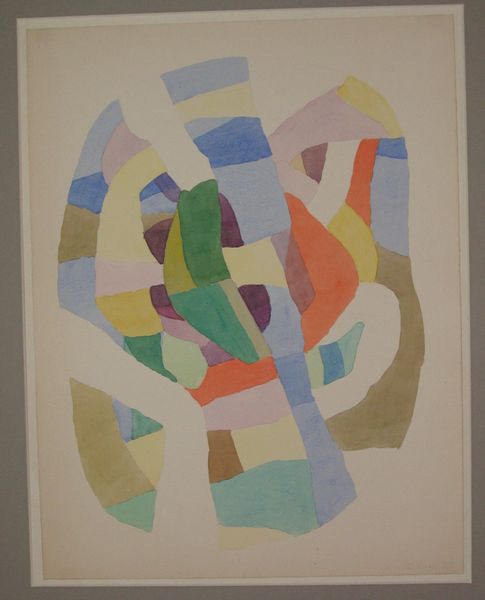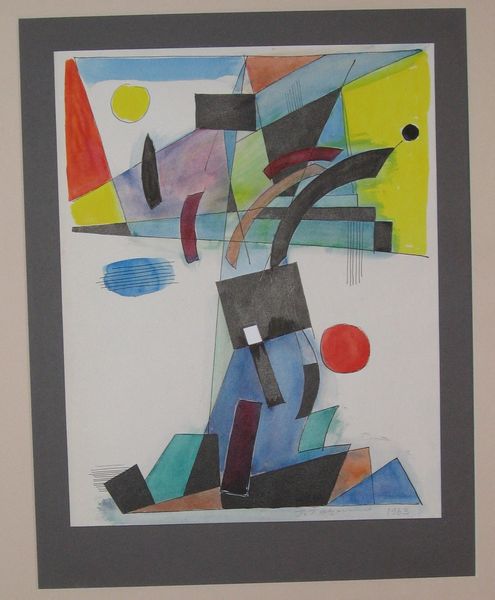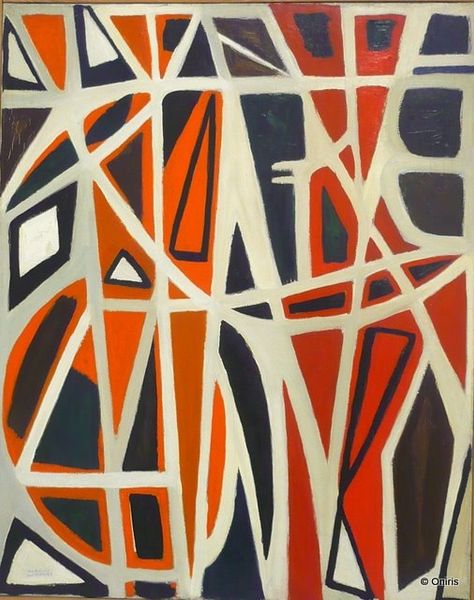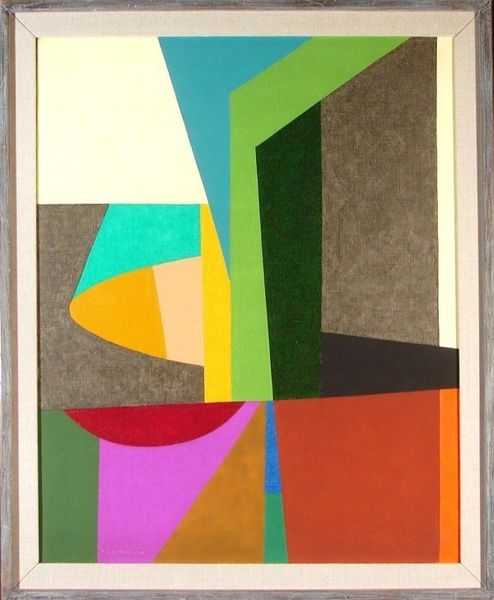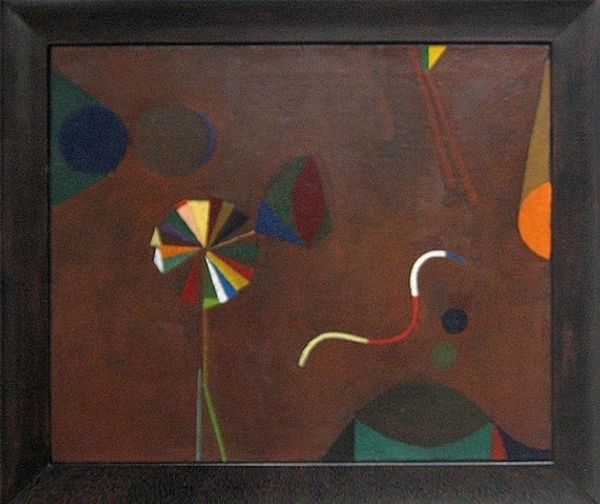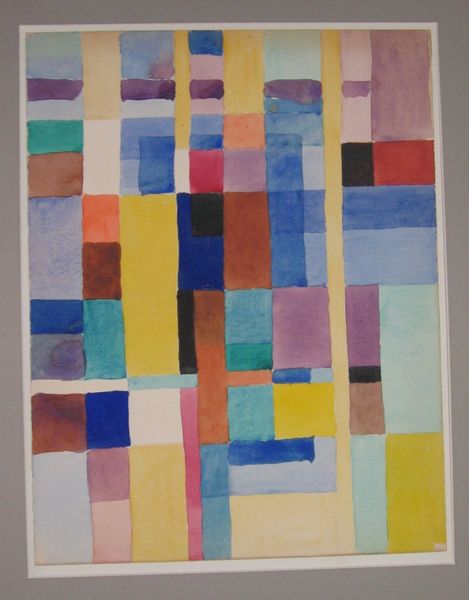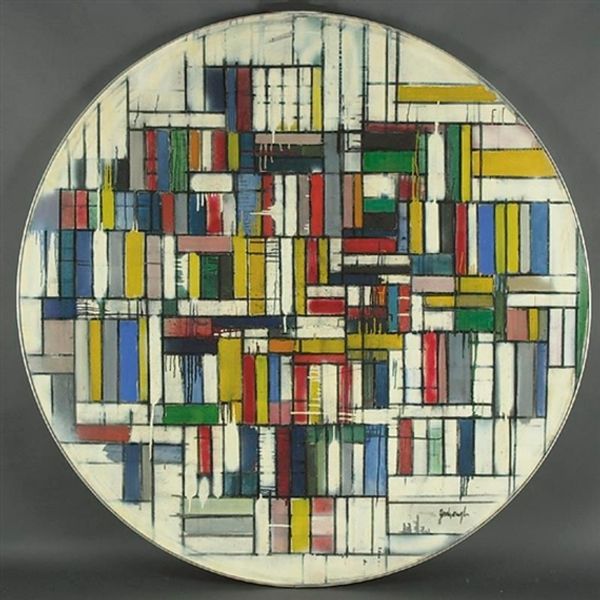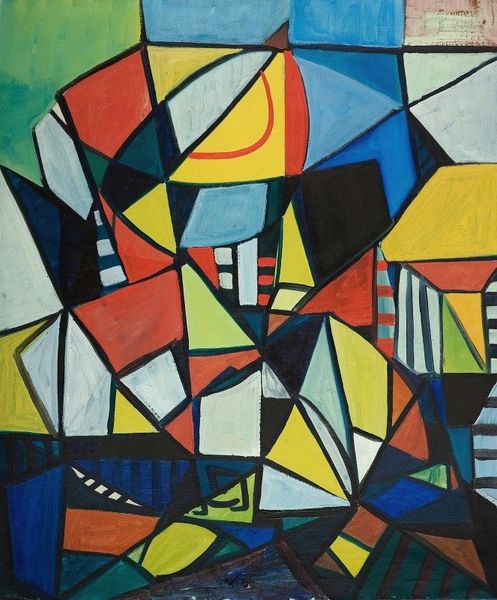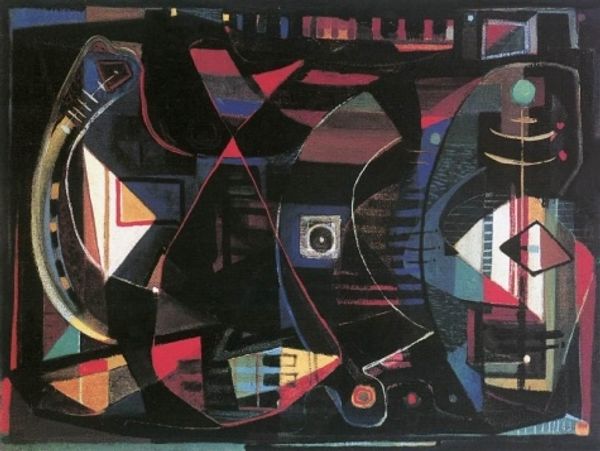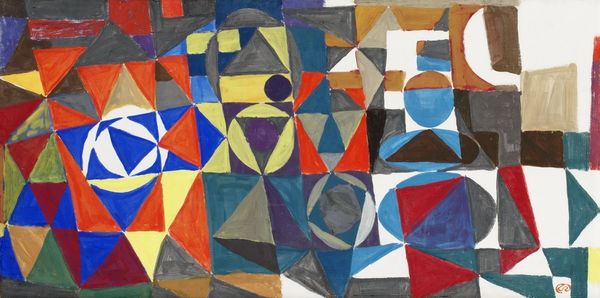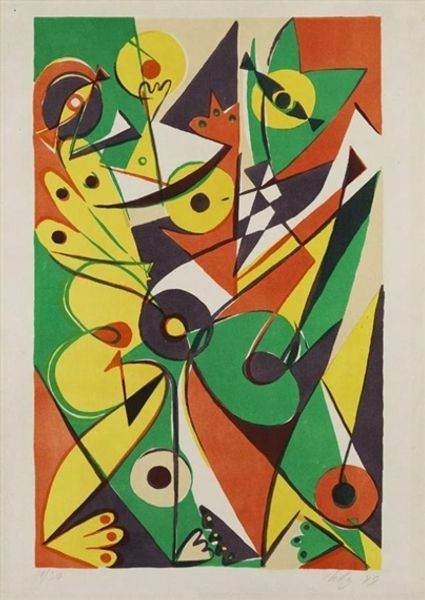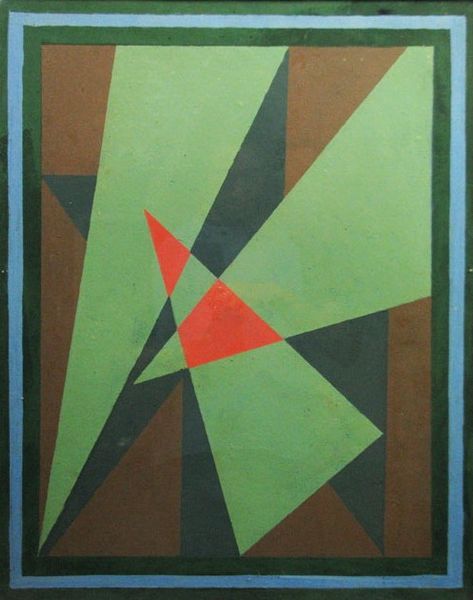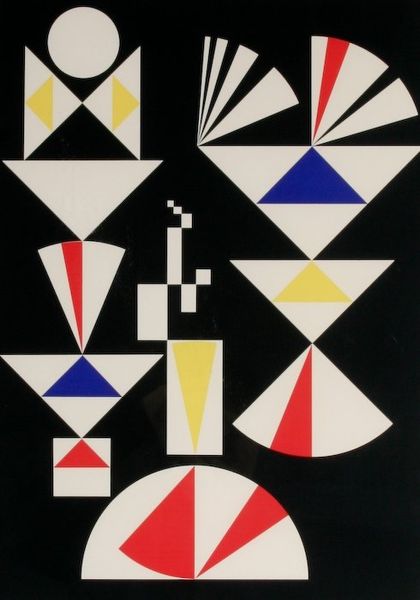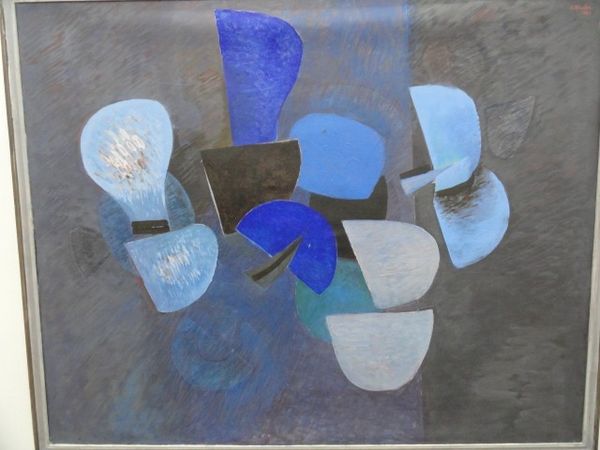
mixed-media, multi-media
#
kinetic-art
#
mixed-media
#
op-art
#
geometric
#
abstraction
#
multi-media
#
modernism
Copyright: Yaacov Agam,Fair Use
Curator: Just looking at Yaacov Agam’s “Black Hole” from 1981, in its mixed media glory, feels like diving headfirst into a kaleidoscope. What's your immediate reaction? Editor: It’s aggressively cheerful! But, considering Agam’s focus on perception, it's interesting to think about how all these shapes were assembled. The mixed media element implies layers, different processes… leading to this overall, somewhat chaotic impression. Curator: Exactly! Agam’s all about challenging our fixed perspectives. It's like he’s saying, "Look closer! What you see depends on how you see it." This piece does this quite literally; depending on where you stand, certain patterns emerge while others dissolve. A sort of perceptual dance. Editor: And a material one. Think about the choices he made: why those specific colors, those sharp geometric forms? I suspect the labor is masked, giving it that clean, almost industrial feel, yet clearly handcrafted... intriguing. Curator: Oh, the colors sing! They evoke a vibrant, almost childlike wonder, but juxtaposed with these rigid geometric forms it gives a sense of underlying tension... Maybe not so cheerful. What materials do you reckon he employed in constructing these modular pieces? Editor: Hard to tell for certain from here, but based on Agam's other works, and the date, I’d say painted wood or plastic elements mounted onto a backing. There’s likely an internal support system too, given the raised surfaces within those shapes... how are they affixed to achieve these 3D qualities, and with what adhesive substances? I like thinking of what’s hidden. Curator: A fine point! It certainly does seem meticulously planned. This is definitely more than decoration. Agam offers not just visual stimuli, but opportunities to reflect, perhaps even meditating on perception and change itself. What about its place in modernism, with a wink to Op Art and Kinetic Art. Does it track? Editor: Undeniably. You've got that clean aesthetic borrowing from industrial design that you see in the early modernists... But I wonder: what would happen if we deconstructed it entirely? To think about those separate, component pieces as modules to assemble in countless other ways; not the pristine art object, but just *materials*. Curator: Well, you are always up to causing chaos! The beauty, I think, is in experiencing it and pondering where all these planes lead us as viewers. What starts as complexity ends in surprising simplicity: perception is individual. Editor: And perhaps this "Black Hole" is really just a well-organized closet for colorful geometric scraps? Anyway, food for thought.
Comments
No comments
Be the first to comment and join the conversation on the ultimate creative platform.
